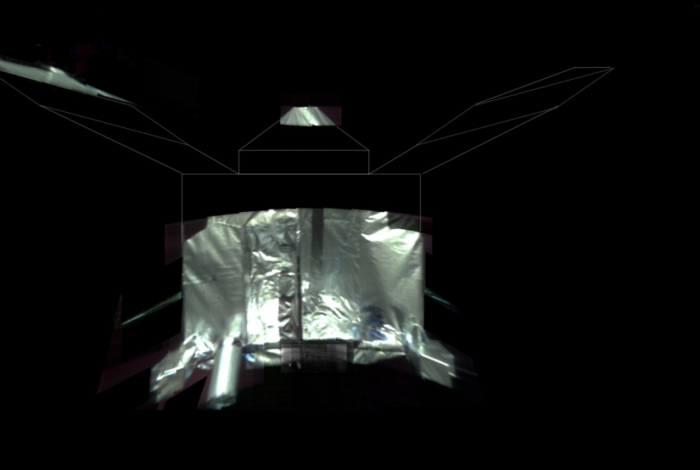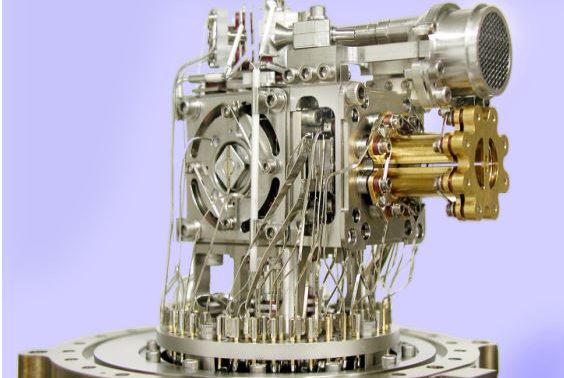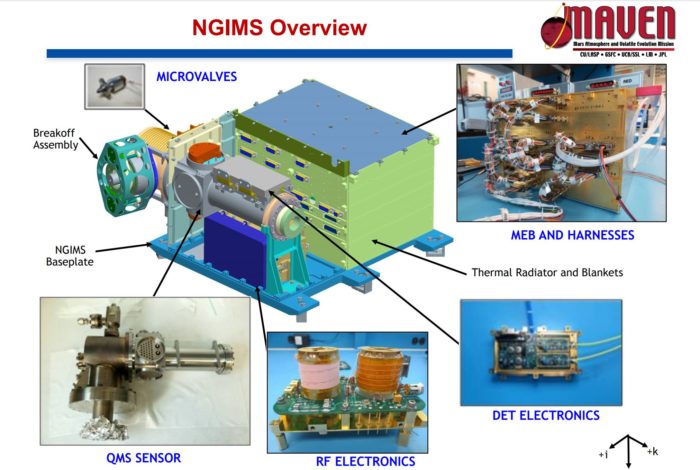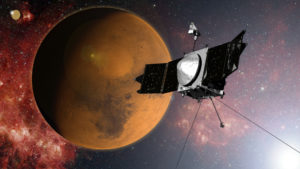Mars Atmosphere and Volatile Evolution Mission / Neutral Gas and Ion Mass Spectrometer
Summary
Mission: To explore the upper atmosphere and ionosphere of Mars and investigate the atmosphere’s interactions with the Sun and solar wind.
Challenge: To measure the rate and variability of the escape of volatiles from the upper atmosphere of Mars.
Solution: Through a combination of detailed point measurements and global imaging, the craft will gather a full profile of Mars’ atmosphere.
Value: The data collected by MAVEN will help to determine the role that loss of volatiles from the Mars atmosphere to space has played through time and provide insight into the history of Mars’ atmosphere, climate, and planetary habitability.
Lab: SPRL in cooperation with the Planetary Environments Laboratory at NASA Goddard Space Center
| “MAVEN has been a tremendous success. The spacecraft and instruments continue to operate as planned, and we’re looking forward to further exploration of the martian upper atmosphere and its influence on climate.” – Bruce Jakosky, MAVEN principal investigator |
Key MAVEN Technology:
- Neutral Gas and Ion Mass Spectrometer (NGIMS)
- Neutral Mass Spectrometer (NMS)
- Langmuir Probe and Waves (LPW)
- Magnetometer (MAG)
- Imaging Ultraviolet Spectrometer
- Solar Wind Ion Analyzer (SWIA)
- Solar Wind Electron Analyzer (SWEA)
- SupraThermal And Thermal Ion Composition (STATIC)
- Solar Energetic Particles
Scientific Objective
Even with low-resolution telescopes one can see evidence of Mars’ watery past in the network of lines crisscrossing the planet’s surface, resembling dry river beds. Mars, however, no longer has liquid water, or even much of an atmosphere. Scientists suspect that, over the past several billion years, Mars has lost nearly 99% of its atmosphere due to its cooling core and the sweeping of solar winds.
In the ongoing quest to investigate Mars’ past and present climate, MAVEN was launched in 2013 and has been orbiting Mars since. The ambitious MAVEN mission goals are to measure the rate and variability of the escape from the upper atmosphere of Mars. MAVEN’s suite of instruments includes a Neutral Gas and Ion Mass Spectrometer (NGIMS) to measure thermal and suprathermal ions and neutral gas, a Remote Sensing Package, and a Particles and Fields Package to provide both overlapping and complementary measurements.
The instrument sensitivity of the two mass spectrometers on board are more than an order of magnitude greater than previous instruments of this type sent into space. The data collected with these precision instruments has demonstrated significant increases in the deterioration of Mars’ atmosphere during solar storms, and continues to provide insight into Mars’ shift from a warm planet with liquid water to the cold, arid, planet of today.




